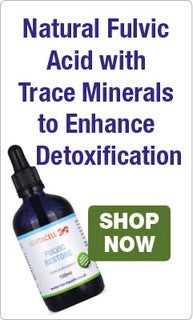In an era where healthy eating is paramount, understanding the unseen dangers that may lurk in your food is essential. Heavy metals, often associated with factories and pollution, can surprisingly find their way onto your plate without you even realising it. For health-conscious individuals, this is not news to ignore. This guide will take you through the heavy metal landscape of our food, how it affects our well-being, and most importantly, how to shield yourself by making informed choices.
The Stealthy Predators in Your Meal Plan
Imagine toxins like arsenic, lead, and mercury hiding in the foods we enjoy daily. Unfortunately, they are not just in rare instances but can be staples in an average diet. From seafood to grains and vegetables, these heavy metals can accumulate over time and pose serious health risks. What’s alarming is the low threshold for heavy metal toxicity – even at minimal levels, the consequences can be severe (1).
Before we tackle the heavy topics of health risks and reduction strategies, it's important to understand what heavy metals really are. Heavy metals – a group of metals and metalloids with high atomic weights – are part of the earth's crust and have become prevalent in our environment due to human activities like industrial processes and agriculture. These toxins are non-biodegradable and thus don't break down in the environment, leading to a persistence that brings them into contact with our food and water supplies.
Heavy Metal Check in Your Groceries and Beyond

Although you can’t see them, heavy metals can be found in a range of foods – some more than others. Seafood, for instance, is often contaminated by mercury, a highly toxic heavy metal. Pesticides and fertilisers used in agriculture sometimes contain arsenic, which can find its way into rice and fruit juices. And lead, from various sources including water pipes and certain food dyes, can be in everything from spices to your child's breakfast cereal.
Heavy Metal Hot Spots
- Rice and Rice-based Products: Arsenic is naturally present in soil and thus can be taken up by rice more easily, making it a key heavy metal concern.
- Seafood: Mercury, which finds its way into our waters through various industrial channels, accumulates in the tissue of fish and shellfish.
- Fruit Juices: Many popular fruit juices have been found to contain levels of lead that raise concern, especially for children.
- Leafy Vegetables: Notorious for their ability to absorb metals from the soil, leafy greens can harbour cadmium.
- Herbal and Ayurvedic Medicines: Often, lead and other heavy metals can be part of traditional remedies, unknowingly posing health risks. That is why it is important to know the company you are buying from, and their ethics when it comes to the manufacturing process.
Health Implications of a Heavy Metal Diet
The effects of heavy metals on human health cannot be overstated. Beyond causing acute symptoms, the gradual accumulation of these toxins over years can lead to chronic conditions such as cancer, liver and kidney damage, and developmental issues in children (2).
The Silent Killers
It's not just one heavy metal that's concerning; it's the cocktail effect of multiple metals that can spell real trouble. For example, recent studies have shown that exposure to various heavy metals is linked to an increased risk of heart disease and stroke (3).
Vulnerable Populations
Pregnant women, children, and the elderly are particularly vulnerable to the effects of heavy metal exposure. The developing bodies of foetuses and young children can suffer irreversible damage, sometimes with devastating long-term consequences for their cognitive and physical development (4).
Strategies to Lower Your Heavy Metal Risk
The good news is, there are several measures you can take to reduce your heavy metal intake. From dietary changes to cooking methods and selective purchasing, here's how you can lower your risk.
Eat Right to Fight the Contamination
Your diet is the first line of defence against heavy metals. By choosing foods known to have lower levels of contamination, you significantly lower your exposure. Opt for:
- Organic Produce: While not a guarantee, organic farming practices often mean a reduction in heavy-metal-containing pesticides and fertilisers.
- Low on the Food Chain: Fish like sardines and salmon, which are lower on the food chain, tend to have lower mercury levels.
- Variety is Key: Rotate your food choices to avoid heavy metals that might accumulate when eating the same thing daily – for instance, swapping brown rice with quinoa or barley.
Cooking and Cleaning Tricks

How you prepare your food and handle your kitchen can also make a difference in your heavy metal exposure.
- Wash Thoroughly: Always wash fruits and vegetables, especially those where the skin is consumed, to remove residual contaminants.
- Cooking Away Danger: Certain cooking methods like boiling, where you discard the water, can help reduce heavy metal content in your food.
- Purify Your Water: Using a water filter can significantly reduce the lead content in water used for cooking and drinking.
Mindful Purchasing
It’s not just how you cook; it’s also what you cook. Be mindful of where your food comes from and how it might have been treated.
- Check for Reports: Utilise reports and research on heavy metal content in foods to guide your choices.
- Consider the Source: Be aware of the source of your foods and choose those that come from areas less likely to be contaminated.
Supplements and Medicine Awareness
Not all that’s good for you is safe. Be cautious when consuming supplements and traditional medications.
- Know Your Dosage: Overconsumption of certain supplements can lead to an accumulation of heavy metals, especially those not regulated by health authorities.
- Consult a Professional: Always consult a healthcare professional before taking any new supplement, especially if you're in a vulnerable population.
Pushing for Policy Change
Regulation plays a crucial role in controlling heavy metal exposure. By staying informed and supporting policies that advocate for safer practices, individuals can make a collective impact.
Action You Can Take
- Stay Informed: Keep an eye on developments in food regulations and consumer advisories related to heavy metals.
- Voice Your Concern: Use your consumer voice to demand safer products and clearer labelling of heavy metal content in food and beverages.
- Support Regulation: Advocate for policies aimed at reducing heavy metal pollution in the environment, as this is the ultimate source of contamination in food.
The Role of Industry and Government
Industry and government have a responsibility to monitor and minimise heavy metal contamination. Here’s how they should play their part:
- Strict Quality Control: Manufacturers must be vigilant in sourcing raw materials and in their production processes to minimise heavy metal contamination.
- Transparent Reporting: Governments and industries must be transparent about heavy metal levels in our food supply and work towards reducing them.
- Invest in Safer Practices: Support and invest in innovative, less polluting technologies that can help keep the food supply cleaner.
Heavy Metal Risk: A Safer, Informed Tomorrow
In our quest for healthy living, it’s time to turn our attention to the metals that may be tainting our food. By taking a few simple precautions, staying involved with the regulatory process, and making our voices heard as consumers, we can lower the heavy metal risk in our daily diets. Remember, the plate is both a source of nourishment and potentially, of harm. Make wise, informed choices, and take control of what you put into your body, safeguarding your health for years to come.
Written by Amy Morris, BSc (Hons) Nutritional Therapy. Amy has been a nutritional therapist for 12 years, specialising in recent years as a functional medicine nutritional therapist. Women’s health, and pre-diabetes and type 2 diabetes prevention are Amy’s specialist areas. Diagnosed with a chronic condition called endometriosis at age 20, this is what motivated Amy to study nutrition. Amy has been in remission for 6 years now, attributing powerful nutrition, lifestyle and bio-identical hormone strategies she now shares with her clients. https://www.greathealthnaturally.co.uk/
Water for Health Ltd began trading in 2007 with the goal of positively affecting the lives of many. We still retain that mission because we believe that proper hydration and nutrition can make a massive difference to people’s health and quality of life. Click here to find out more.
References
References:
1) Jaishankar, M., Tseten, T., Anbalagan, N., Mathew, B. B., & Beeregowda, K. N. (2014). Toxicity, mechanism and health effects of some heavy metals. Interdisciplinary toxicology, 7(2), 60–72. https://doi.org/10.2478/intox-2014-0009
2) Tchounwou, P. B., Yedjou, C. G., Patlolla, A. K., & Sutton, D. J. (2012). Heavy metal toxicity and the environment. Experientia supplementum (2012), 101, 133–164. https://doi.org/10.1007/978-3-7643-8340-4_6
3) Yang, A. M., Lo, K., Zheng, T. Z., Yang, J. L., Bai, Y. N., Feng, Y. Q., Cheng, N., & Liu, S. M. (2020). Environmental heavy metals and cardiovascular diseases: Status and future direction. Chronic diseases and translational medicine, 6(4), 251–259. https://doi.org/10.1016/j.cdtm.2020.02.005
4) Carroquino, M. J., Posada, M., & Landrigan, P. J. (2012). Environmental Toxicology: Children at Risk. Environmental Toxicology: Selected Entries from the Encyclopedia of Sustainability Science and Technology, 239–291. https://doi.org/10.1007/978-1-4614-5764-0_11




























Leave a comment